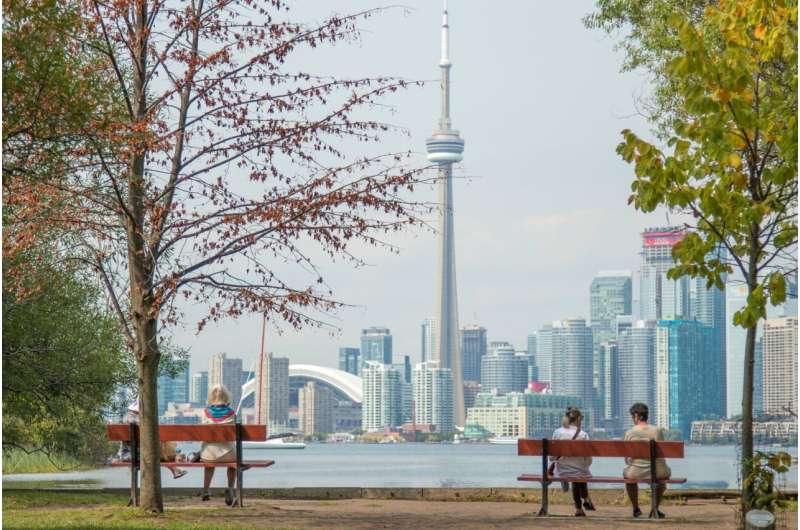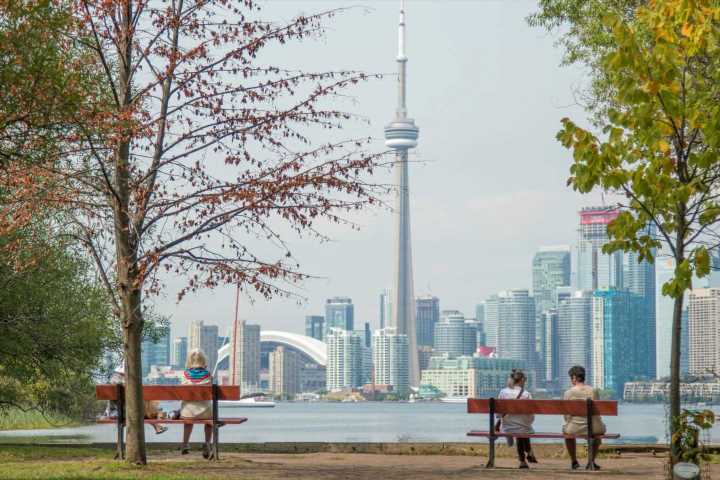
Even though many global cities incorporate greenspaces such as pocket parks and community gardens into their urban planning efforts, new UBC research shows those plans often fail to include the needs of youth and young adults between the ages of 15 and 24. As a result, this age demographic can miss out on the known social, physical and mental health benefits of these nature-based solutions.
UBC faculty of forestry researchers Dr. Sara Barron (she/her) and Dr. Emily J. Rugel (she/her) analyzed data collected during visits to parks in two cities in Australia and reviewed evidence from the past few decades to develop a new tool for evaluating greenspaces for young adults.
Public urban greenspaces keep our cities cool, reduce stress and improve mood, says Dr. Barron. They promote activities such as physical exercise and social interactions. These benefits are important for everyone, but especially so for young adults, because it is at this time of life when many chronic mental disorders emerge.
Greenspace impacts on mental health
“Exposure to the right sort of greenspace can promote strong social ties and a connection to nature during these critical years. Unfortunately, nature and health research, as well as urban planning, has tended to ignore this important demographic.”
Reviewing the urban landscape in the Lower Mainland in British Columbia, Canada, Dr. Barron notes that there are attractive greenspaces, but very few are intentionally designed for young adults.
“For example, we’re really good at providing playgrounds for younger children or including things like benches in parks for older adults. But when it comes to youth and young adults, there’s a noticeable lack of intentionally designed spaces where they can just be themselves.”
A few spaces that do meet these criteria to a degree include Spanish Banks, where the logs on the beach provide a measure of privacy for solo parkgoers as well as groups; and Stanley Park, which offers an incredible amount of biodiversity.
“However, there is a clear need to purposefully design our public greenspaces to make them more appealing to youth and young adults, particularly in light of emerging research suggesting that young people experienced poorer mental health as a result of the stresses of the COVID-19 pandemic,” says Dr. Barron.
Calling for ‘tolerant greenspaces’
In their paper the authors introduce what they call “tolerant greenspaces”—places that support young adults’ needs for both social interaction and psychological restoration.
“Such places provide order—they are natural, but they’re also well cared for and safe,” says study co-author Dr. Emily Rugel. “They show diversity, both in plant life and in the activities they enable. Lastly, they give youth a place to either seek solace in quiet solitude or spend time with their friends without adult supervision.”
The authors tested this concept on a range of greenspaces in Sydney and Melbourne, Australia’s two largest cities. Laneways with vegetation placed neatly on both sides do well in terms of creating a sense of order, for example. Formal parks planted with more than three tree species or offering equipment for at least three recreational activities provide diversity. Even pocket parks that use terracing or shrubbery to create distinct areas support seclusion and retreat.
Moving forward, Dr. Barron and Dr. Rugel are proposing a framework that planners or even young citizen scientists can use to evaluate the extent to which greenspaces are tolerant, and to plan for future spaces.
Source: Read Full Article
